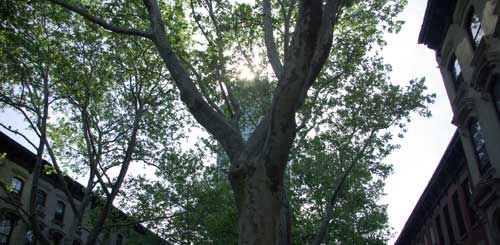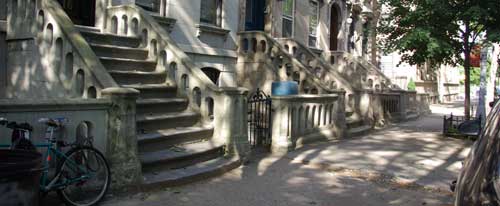Pajala – sundial north of arctic circle
Another contender for the world’s biggest sundial today is in the Torne Valley, north of the Arctic Circle. It is 38.33 m. in diameter and is situated at 23.28
Another contender for the world’s biggest sundial today is in the Torne Valley, north of the Arctic Circle. It is 38.33 m. in diameter and is situated at 23.28
Shadow indicates brownstone stoops on 45th Ave. between 11th and 21st streets at 9am on May 30th.


Earlier posts about the phenomena of Manhattanhenge: overview and map, and photos.
From the Hayden Planetarium’s “Star Struck” email announcement by astronomer Neal deGrasse Tyson:
It’s that time of year again….
These two days give you a photogenic view with half the Sun above and half the Sun below the horizon — on the grid. The day after May 29th (Friday, May 30th), and the day before July 12 (Friday, July 11) will also give you Manhattanhenge moments, but instead you will see the entire ball of the Sun on the horizon — on the grid. My personal preference is the half-Sun.
Note that a couple of years ago, an article in the New York Times identified this annual event as the “Manhattan Solstice”. But of course, the word “solstice” translates from the Latin solstitium, meaning “stopped sun,” in reference to the winter and summer solstices where the Sun’s daily arc across the sky reaches its extreme southerly and northerly limits. Manhattanhenge comes about because the Sun’s arc has *not* yet reached these limits, and is on route to them, as we catch a brief glimpse of the setting Sun along the canyons of our narrow streets.
Arrive a half-hour earlier than the times given below.
MAY
Half Sun on grid: Thursday, May 29 — 8:17 p.m. EDT
Full Sun on grid: Friday, May 30 — 8:16 p.m. EDT
JULY
Half Sun on grid: Saturday, July 12 — 8:25 p.m. EDT
Full Sun on grid: Friday, July 11 — 8:24 p.m. EDT
http://research.amnh.org/users/tyson/ManhattanSunset.php
The Basilica of San Petronio is the main church of Bologna, the old città d’arte in the Emilia Romagna region of Italy. The church hosts also a sundial in the form of a meridian line inlaid in the paving of the left aisle in 1655; it was calculated and designed by the famous astronomer Giovanni Domenico Cassini, who was teaching astronomy at the University: at 66.8 meters it is the longest sundial in the world, following measurements that were for the time uniquely precise.
The video below shows the passage of the sun on the Cassini’s meridian line inside San Petronio in Bologna on the 30th November 2007. Thanks to matutianu1935 of YouTube-